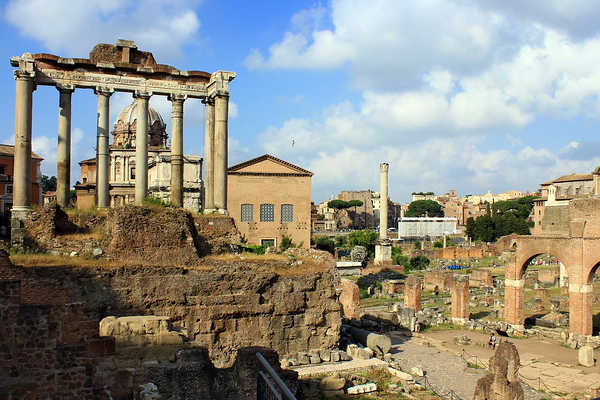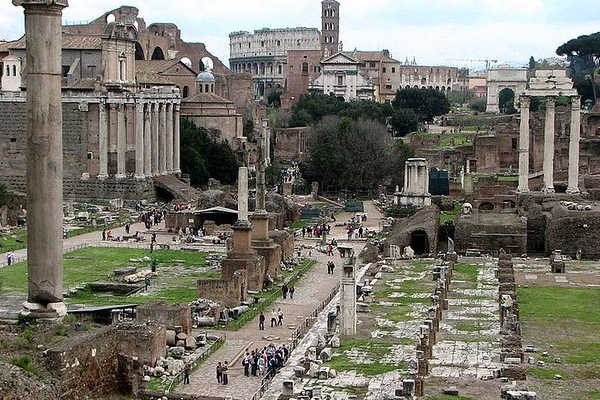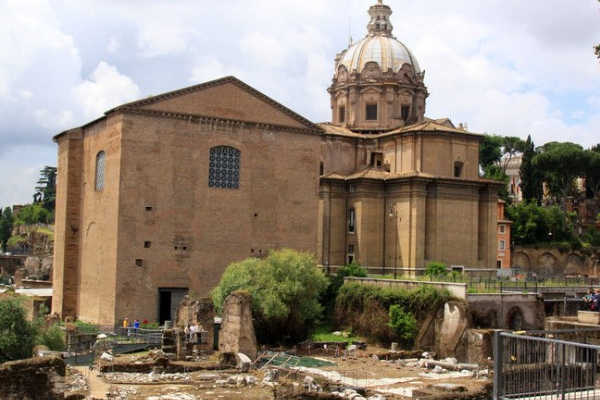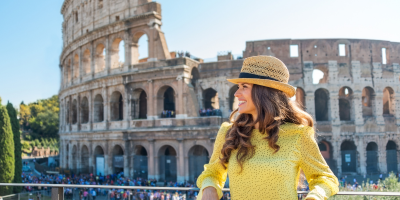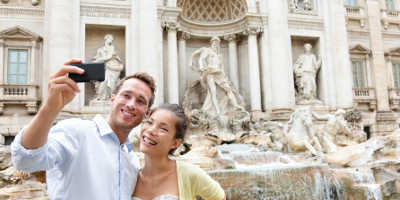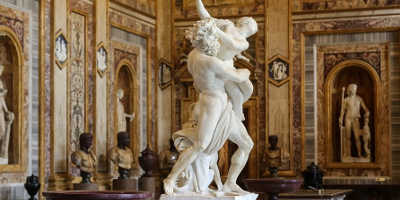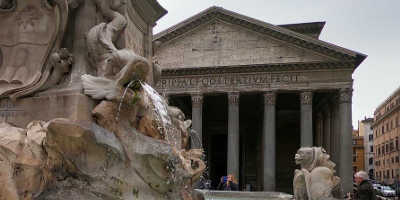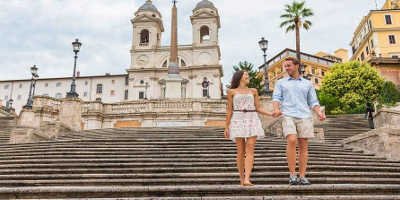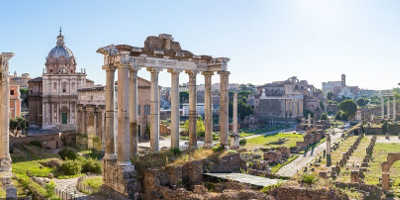Roman Forum, Rome
Every city has a certain place where everyone comes together to meet. For ancient Rome, this place was known as Forum Romanum, which many just named the Forum.
Though many of the buildings in the Forum are close to 3000 years old, you can still explore them on a tour of this remarkable destination.
The Forum was first developed in 7th Century BC as a center for temples, halls and public spaces for the people of Rome to gather. Over time it developed into the social, political and even commercial hub of the Roman empire, which meant that almost every meeting of importance regarding the future of Rome took place here. They held everything from elections and public speeches to criminal trials and gladiatorial matches within the Forum. This destination was so popular that it has since been named the world’s most celebrated meeting place throughout history. Simply visiting what remains of these once-pristine pillars and walls is a profound experience. It brings to light the might of the ancient Roman civilization and their immense skill in construction.
Visiting Roman Forum
The Forum is so full of noteworthy buildings that it could take a full day to explore them all in their entirety. Upon entry, you will find yourself faced with three options. Either to go left and explore the Tempio di Antonio e Faustina, which was a temple built in 141 AD and later transformed into a church known as Chiesa di San Lorenzo in Miranda over 800 years later. If you instead decide to go right, you will find yourself walking amongst the remains of the Basilica Fulvia Aemilia. This 100m long public hall was built in 179 BC and saw thousands of Romans gather over the years for various meetings. Heading straight on from the entrance will bring you to the Via Sacra, the Forum’s main walkway, this will lead you to a range of other attractions in the forum, each telling a different historical tale of the Rome of the past.
Highlights of the Forum
-
Tempio di Saturno
The eight-pillared remains of the Temple of Saturn is one of the most iconic structures of the Forum and looms over the surrounding ruins. It was originally built in 498 BC and was rebuilt in 42 BC. Saturn was considered the god of wealth, so the building was used as a treasury in which the money of Rome was kept. Saturn used to be worshipped in the Saturnalia festival every December from the 5th century and during this festive occasion citizens gave gifts and slaves enjoyed ordinary freedoms. Within the Temple would have stood a statue of Saturn and during this event his feet would have been symbolically freed from their ties which remained for the rest of the year. This ritual meant that Saturn also became a symbol of freedom.
-
Arco Di Settimio Severo
More commonly called the Arch of Septimus Severus, this giant white marble arch sits at the northwest end of the Forum. Built in 203 AD to celebrate the defeat of the Parthians, the arch was dedicated to the eponymous emperor and his two sons. After the death of Septimus Severus, his sons Caracalla and Geta became joint emperors until Caracalla had Geta assassinated. Following this, all images or mentions of Geta were removed from public monuments and everything relating to him on the arch has been removed.
-
The Curia
Within the walls of the Curia, the senate met and set the legal standards of society. Construction began under the reign of Julius Caesar but was completed after his assassination under the rule of Augustus Caesar. In its prime, the building would have been covered in marble however after years of theft from the site, only a simple brick building remains. It was converted into the basilica of Sant’Adriano al Foro in the 7th Century.
-
Arco di Tito
Translated as the Arch of Titus, this 1st century structure is said to have inspired the Arc de Triomphe in Paris. It was built by the emperor Domitian in 81 AD to celebrate the military victories of his brother Titus. As one of these victories was the siege of Jerusalem in 70 AD, many Roman Jews of the past would refuse to walk beneath the arch. Images of Titus are carved into the stone, depicting his military triumphs. When visiting the arch, see if you can find the carving of Titus on the back of an eagle being carried to heaven.
-
Tempio de Guilio Cesare
One of the more significant stops in your trip to the Roman Forum will be the Temple of Caesar. Built in 29 BC, this structure marks the spot where the assassinated body of Julius Caesar was cremated. After Caesar’s death, his supporters erected an altar at the place of the cremation; however it was torn down by those who had wished for his death. The Senate later deified Caesar, and Emperor Augustus decided that the temple would be built in place of the altar. When visiting this site, it may surprise you to see that the place which Caesar was cremated appears to be a mere pile of rocks, but the cultural significance here is huge and some people still lay flowers at the site.
Of course, much like many other Roman cities and developments, time took its toll on the structures of the Forum. In its state of disrepair, the land was no longer seen to have any social or political value and was converted into a pasture for cows to graze known as Campo Vaccino. It was also stripped of much of its marble and stone. Excavations have been taking place since the 18th century and continue to this day.

